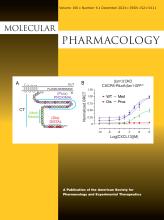Abstract
Water excretion by the kidney is regulated by the neurohypophyseal peptide hormone vasopressin through actions in renal collecting duct cells to regulate the water channel protein, aquaporin-2. Vasopressin signalling is initiated by binding to a G-protein coupled receptor V2R, which signals through Gsα, adenylyl cyclase 6, and activation of the cAMP-regulated protein kinase (PKA). Signaling events coupling PKA activation and aquaporin-2 were largely unknown until the advent of modern protein mass spectrometry techniques that allow proteome-wide quantification of protein phosphorylation changes (phosphoproteomics). This short review documents phosphoproteomic findings in collecting duct cells describing the response to V2-selective vasopressin agonists and antagonists, the response to CRISPR-mediated deletion of PKA, results from in vitro phosphorylation studies using recombinant PKA, the response to the broad spectrum kinase inhibitor H89, and the responses underlying lithium-induced nephrogenic diabetes insipidus. These phosphoproteomic datasets have been made available online for modelling vasopressin signalling and signalling downstream from other Gsα-coupled receptors.
SIGNIFICANCE STATEMENT New developments in protein mass spectrometry are facilitating progress in identification of signaling networks. Using mass spectrometry, it is now possible to identify and quantify thousands of phosphorylation sites in a given cell type (phosphoproteomics). The authors describe the use of phosphoproteomics technology to identify signaling mechanisms downstream from a Gsα-coupled receptor, the vasopressin V2 receptor, and its role of the regulation and dysregulation of water excretion in the kidney. Data from multiple phosphoproteomic datasets are provided as web-based resources.
- The American Society for Pharmacology and Experimental Therapeutics






